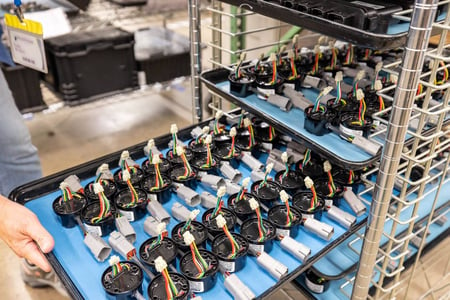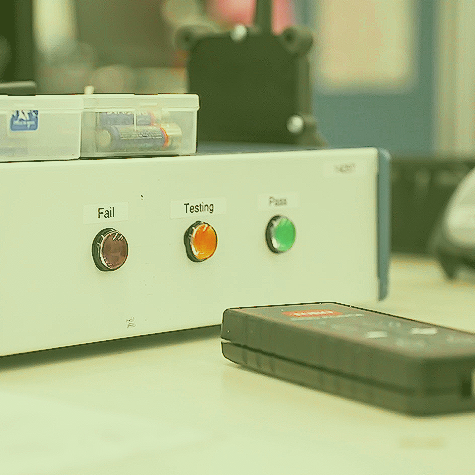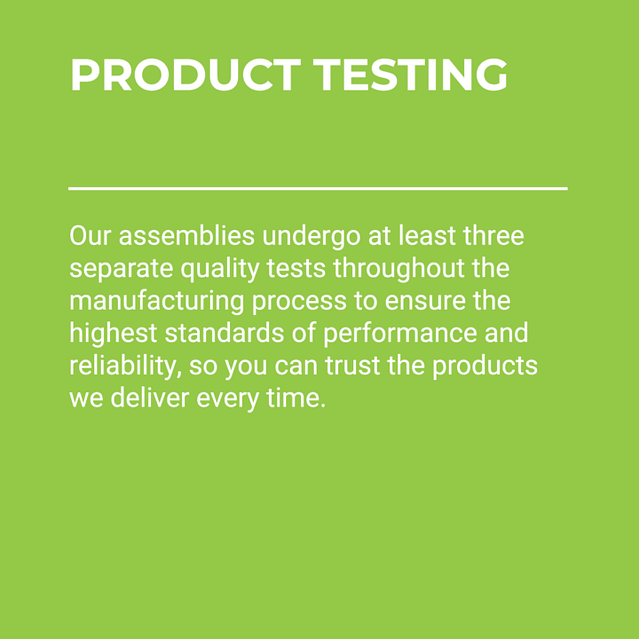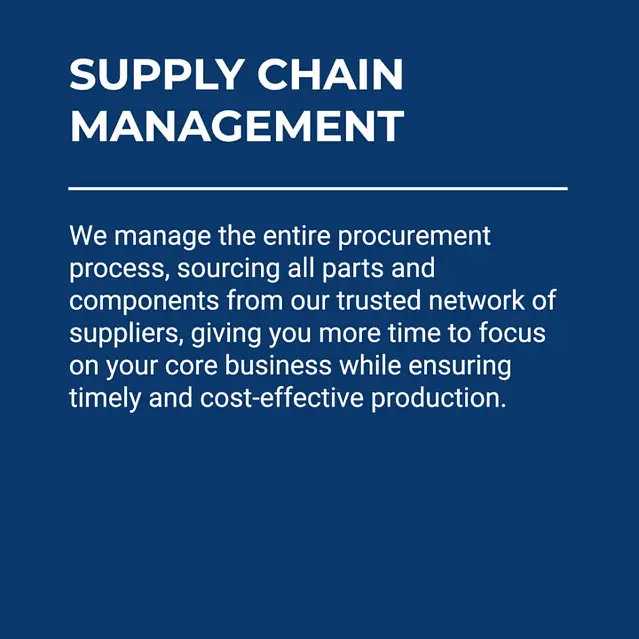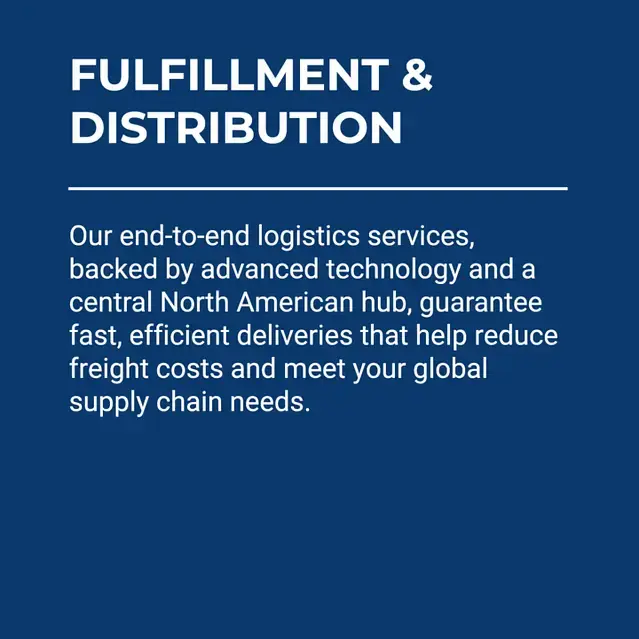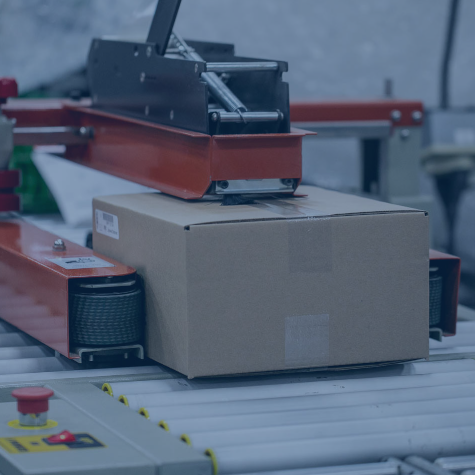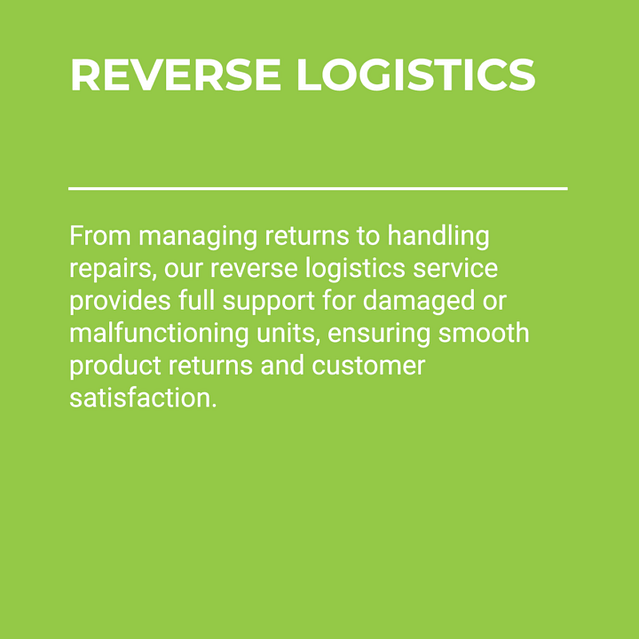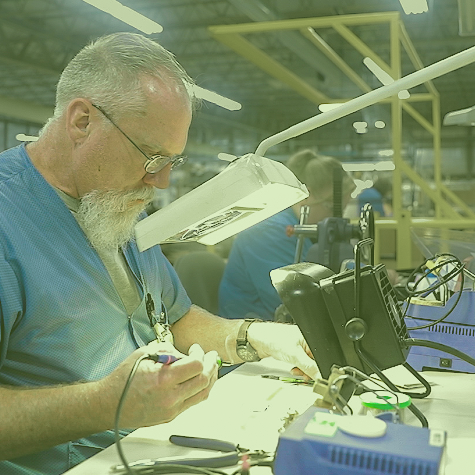Design for Manufacturing (DFM) is designing products for easy manufacturing and creating a better, more cost-effective product. Making a product that works well and lasts a long time takes a lot of work. One important step is ensuring the design is as simple and efficient as possible. This helps the product work well during production and when people use it. DFM aims to reduce manufacturing costs and avoid costly disruptions without sacrificing quality or performance.
STRATEGIC DESIGN FOR EFFICIENT MANUFACTURING
DFM is part of a way of making things that tries to do it right the first time. This helps to use fewer materials and not repeat steps, saving time and money. Adopting the DFM approach can help original equipment manufacturers (OEMs) save money and time. It improves how things are done and speeds up the process of getting products to market. This is especially helpful for contract manufacturers.
At RiverSide Integrated Solutions (RIS), we help our customers maximize the manufacturability of their designs. Our dedicated quality improvement team aims to improve our manufacturing processes and the products we make.
ENHANCING PRODUCT DESIGN
Products must be designed from the beginning to be manufacturable. The DFM process should occur early in the project’s design phase. It should all engage key parties with the goal of tapping into the experience of each expert. The team will scrutinize the current design from many angles to identify a more cost-effective solution that maintains quality.
When designing a product, it’s important to consider how easy it will be to make. This can help keep costs down and ensure the manufacturing process is dependable. During the DFM process, you must consider several aspects of the design. These include part geometry, location, shape of critical surfaces, size and others.
It’s essential to think about a few things when making a product. Choosing suitable materials, being aware of the room for error and carefully selecting specific measurements are all important factors. These things can affect how easy or hard it is to make the product. OEMs’ choices of material, color, size and tolerance help create reliable parts that can be produced in large quantities. It also helps to minimize scrap rates and losses.
The Value of Design for Manufacturing
OEMs need to ensure the part is as easy to manufacture as possible. This will result in more efficient production, better quality, and lower cycle times. Below are several ways OEMs gain value from the DFM process.
SIGNIFICANT COST AND TIME SAVINGS
Sometimes OEMs try to release new products quickly. This can lead to them cutting corners in the design process, which is never a good idea.
It is also essential to note that changes in design become exponentially more expensive throughout the product’s life cycle.
When planning a project, it’s crucial to have a detailed process in place. Executing the strategy carefully can catch any problems before they cause significant delays or cost money. The adage “an ounce of prevention is worth a pound of cure” accurately shows DFM.
OPTIMIZE FUNCTIONALITY AND AESTHETICS
If the part design is off, the inconsistencies will alter its aesthetics and functionality. Even a slight difference can cause massive problems. This is especially true for parts that require tooling or molds, which are often expensive and time-consuming to generate.
The DFM process typically includes computer simulations of the design so the team can fully visualize the product. Going through this step often helps teams find new ways to improve their work. DFM is really useful for catching those extra details. The ultimate result of which is a more functional and aesthetically-pleasing product.
In addition, the DFM process will likely improve specialized tooling designs such as jigs, fixtures and dies. Without consideration during product development, the tooling may be unnecessarily complex or inefficient, leading to production challenges.
VERIFY MANUFACTURABILITY
The DFM process ensures that parts can be manufactured.
This may seem obvious, but many products reach production before anyone realizes the current design is ineffective. What a nightmare.
To avoid this situation, OEMs must value and emphasize the DFM process. They must also be willing to take the time to make the necessary revisions to improve the part design. And they need to do this before initiating production.
CONFIRM ASSEMBLY
When making things, it’s not just about making them fast. It’s important to consider how they all fit together so that everything works well and doesn’t waste resources.
If you’re making a product, it’s essential to think about the production of an assembly. You can either do this yourself or hire a contract manufacturer to do it for you. Either way, you need to consider how the product’s design will affect the process of putting it together.
This is especially important if you’re working with a contract manufacturer like RIS, which specializes in this work.
Companies should map out the physical flow of materials through each stage of assembly to identify areas for improvement. In many cases, less is more.
For instance, a best practice is to minimize the total parts and tools utilized in an assembly. It’s also best practice to reduce the complexity of their placement.
If performed properly, designing and optimizing for assembly will reduce manufacturing costs and avoid costly disruptions without sacrificing quality or performance.
DRIVE SIMPLIFICATION AND MINIMIZATION
Specific design features such as tight tolerances and engraving significantly impact the part cost. This drive-up cost and directionally reduce production efficiency.
As part of the DFM process, OEMs should look at design alternatives. They should ensure that any complex or intricate features are “must-haves.”
DFM will also look for opportunities to reduce raw materials. It might work best to replace solid part sections with more hollow sections. And if engineers can make the change without sacrificing quality or integrity, they should.
These design adjustments may seem like a slight reduction in material. Still, when multiplied over many production runs, the result can be significantly decreased manufacturing costs.
DRIVE PRODUCTION EFFICIENCIES
Creating a product is often as important as the product itself. Suppose you don’t consider the creation process during the design stage. In that case, building standardization and efficiencies in production and assembly can be challenging.
During the DFM process, designers must remember that production workers will follow the blueprint provided. They cannot make design adjustments on the fly. Thus, the design must be right the first time.
About RiverSide Integrated Solutions:
RIS is an advanced contract manufacturer providing robust solutions in circuit board assembly and product assembly. We employ more than 350 people and provide services to OEMs worldwide. We operate two state-of-the-art manufacturing facilities within the US.
With all of the choices in contract manufacturers out there, we know it can be challenging to find someone who understands your business model and has your best intentions in mind. RIS has always proven to be a win-win-focused relationship.
As your one-stop shop, we have the capabilities, capacity, quality assurance standards and resources to support all of your manufacturing needs. We understand that supply chain management is complex and very time-consuming, so we urge our customers to utilize us in the fullest capacity.
Our total-package solutions include:
- Dedicated Program Team
- Extensive supply-chain network for efficient parts procurement and kitting
- Subassembly and full box-build
- Warehousing and drop-shipping capabilities
- Reverse logistics
- Flexible order fulfillment
- Scalability to meet your needs
Contact us today at (507) 523-3220 to see how we can help with your manufacturing project, or click contact us for a quote.


